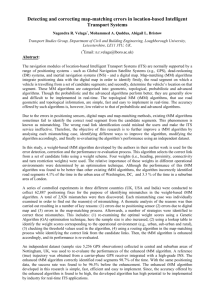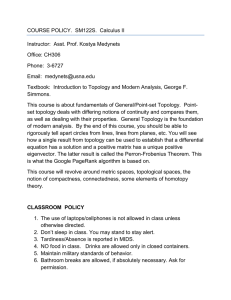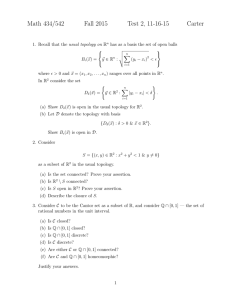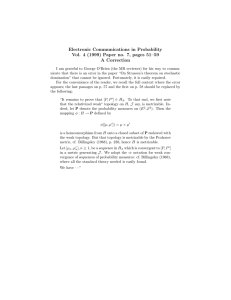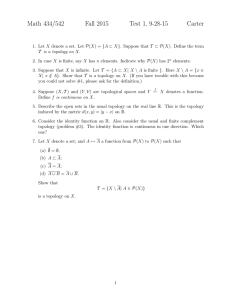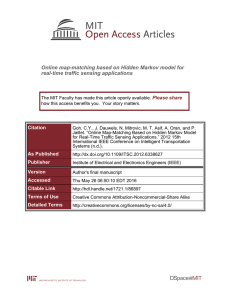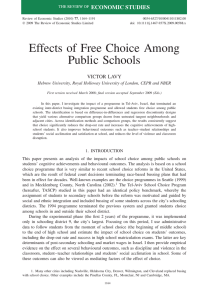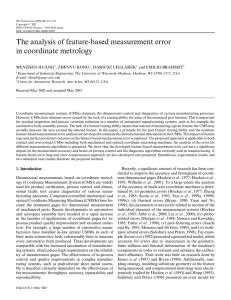AUTOMATIC REGISTRATION OORNE IMAF AIRBORNE AND SPACE-BGES
advertisement
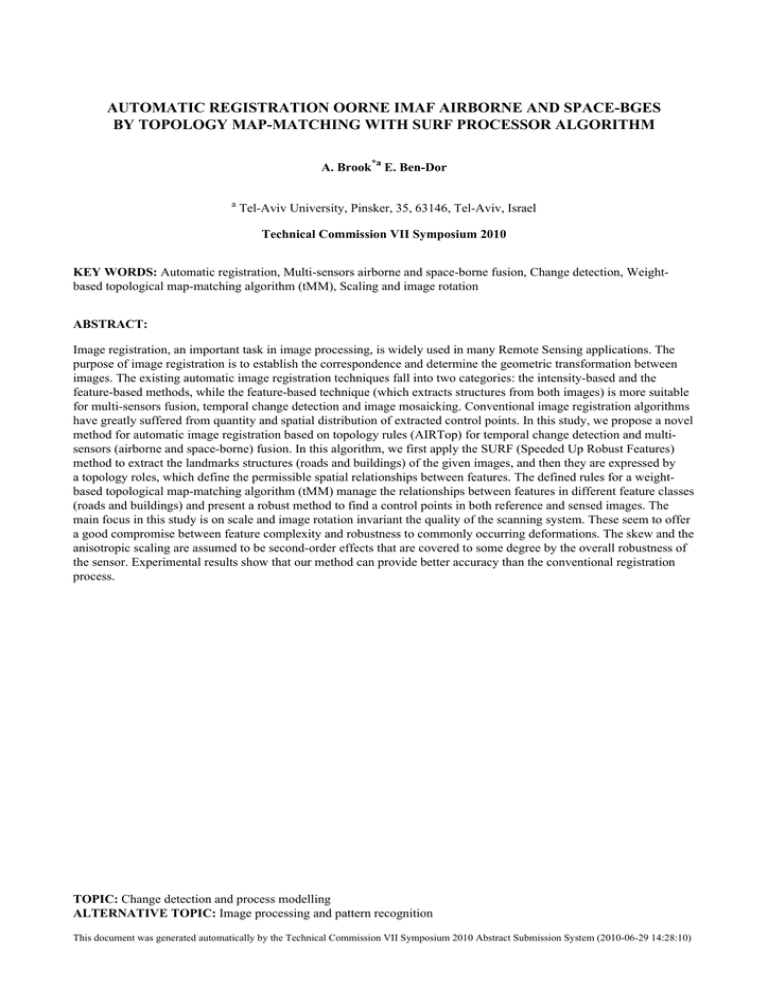
AUTOMATIC REGISTRATION OORNE IMAF AIRBORNE AND SPACE-BGES BY TOPOLOGY MAP-MATCHING WITH SURF PROCESSOR ALGORITHM A. Brook*a E. Ben-Dor a Tel-Aviv University, Pinsker, 35, 63146, Tel-Aviv, Israel Technical Commission VII Symposium 2010 KEY WORDS: Automatic registration, Multi-sensors airborne and space-borne fusion, Change detection, Weightbased topological map-matching algorithm (tMM), Scaling and image rotation ABSTRACT: Image registration, an important task in image processing, is widely used in many Remote Sensing applications. The purpose of image registration is to establish the correspondence and determine the geometric transformation between images. The existing automatic image registration techniques fall into two categories: the intensity-based and the feature-based methods, while the feature-based technique (which extracts structures from both images) is more suitable for multi-sensors fusion, temporal change detection and image mosaicking. Conventional image registration algorithms have greatly suffered from quantity and spatial distribution of extracted control points. In this study, we propose a novel method for automatic image registration based on topology rules (AIRTop) for temporal change detection and multisensors (airborne and space-borne) fusion. In this algorithm, we first apply the SURF (Speeded Up Robust Features) method to extract the landmarks structures (roads and buildings) of the given images, and then they are expressed by a topology roles, which define the permissible spatial relationships between features. The defined rules for a weightbased topological map-matching algorithm (tMM) manage the relationships between features in different feature classes (roads and buildings) and present a robust method to find a control points in both reference and sensed images. The main focus in this study is on scale and image rotation invariant the quality of the scanning system. These seem to offer a good compromise between feature complexity and robustness to commonly occurring deformations. The skew and the anisotropic scaling are assumed to be second-order effects that are covered to some degree by the overall robustness of the sensor. Experimental results show that our method can provide better accuracy than the conventional registration process. TOPIC: Change detection and process modelling ALTERNATIVE TOPIC: Image processing and pattern recognition This document was generated automatically by the Technical Commission VII Symposium 2010 Abstract Submission System (2010-06-29 14:28:10)


